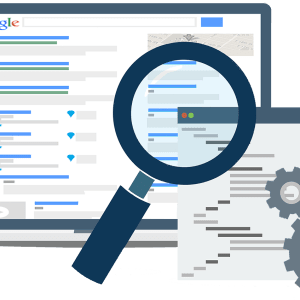So you have an existing website. You have either just launched it or perhaps it’s been live for a while. The design is solid. But now you want to improve your position in Google’s search results. Maybe you want to see your page on the front page.
First Step: have you taken care of the fundamentals?
Before attempting to improve your search results positioning some things have to be taken care of first. Both in terms of design as well as under the hood.
Development
Is the underlying code as clean as possible? Have on-page technical SEO requirements been met?
These questions are difficult or impossible or impossible for non-tech to answer. To have these questions resolved you need a qualified and experienced developer. Hopefully the person who built your site was qualified and experienced. But trying to push pages higher up Google’s search engine results without having these things taken care of first handicaps you from the start. Poor development practices
Design
Does your site generally and your pages individually communicate your message clearly to your target audience? Do you have clear calls to action? Is your copy great?
If your copy doesn’t grab and keep the attention of your target audience than good search engine results positioning won’t help you as much as you think. Your conversions will suffer.
Design issues can be taken care of by recruiting a good designer and/or copywriter.
Hosting
Google rewards sites with good hosting and punishes sites with bad hosting. A good hosting company will provide you with an adequately fast server. They will give you good advice on which of their offerings suits your needs. They will help you in maintaining SSL certificates. Generally speaking, you get what you pay for when it comes to hosting. So don’t use crappy cheap hosts if your website is important to your business.
So, with the fundamentals taking care of, we can begin…
Improving Your Search Engine Positioning
When Google accesses your page it assess it for two things: Quality and Relevance.
How do we know this?
Google is open about the broadest aspects of how it ranks sites and pages. It publicly releases information to the public, including some of it’s internal documentation. However, Google keeps many details secret. Both to prevent people from gaming the system and to remain competitive.
Now that we know about Quality and Relevance, how to make sure our pages and sites have both of these things?
Quality
We can glean what Google considers Quality by looking at a document that Google provides to an internal testing team. There’s a lot of detail and context that I won’t go into. But here’s what we can tell that this team within Google are told to test for:
- A “satisfying amount of high quality content”
- Page design that satisfies the visitors needs
- Articles written with effort and skill
- Articles written with “Expertise, Authorativeness and Trustworthiness
- Helpful supplementary content
- A positive reputation
Conclusions Google’s Quality Guidelines
The interesting thing about the quality guidelines that Google gives to it’s own testers is that they pretty much make sense to non-technical folk. It helps to have an understanding of web content generally. But generally the guidelines are intuitive.
Practical Steps To Improving Search Engine Positioning
There are two points at which you can take practical steps to implement the quality guidelines:
- When creating new content
- When editing existing content
Either way, you can treat Google’s quality guidelines as a checklist. When creating or editing content you can look at your text and ask if it meets those guidelines. If you aren’t sure on the meaning of the guidelines you can read the document itself.
User Advocacy
It is extremely important not to be self-justificatory when critiquing your own copy against the guidelines. Don’t look at compare your text against the guidelines and think “this text matches my visitors needs” without really thinking about your visitor and their needs.
It’s too easy to confuse the needs of our visitors with our own needs as the content publisher. They are not the same. We need to step back and be honest about the human desires and needs of the consumers of our content.

